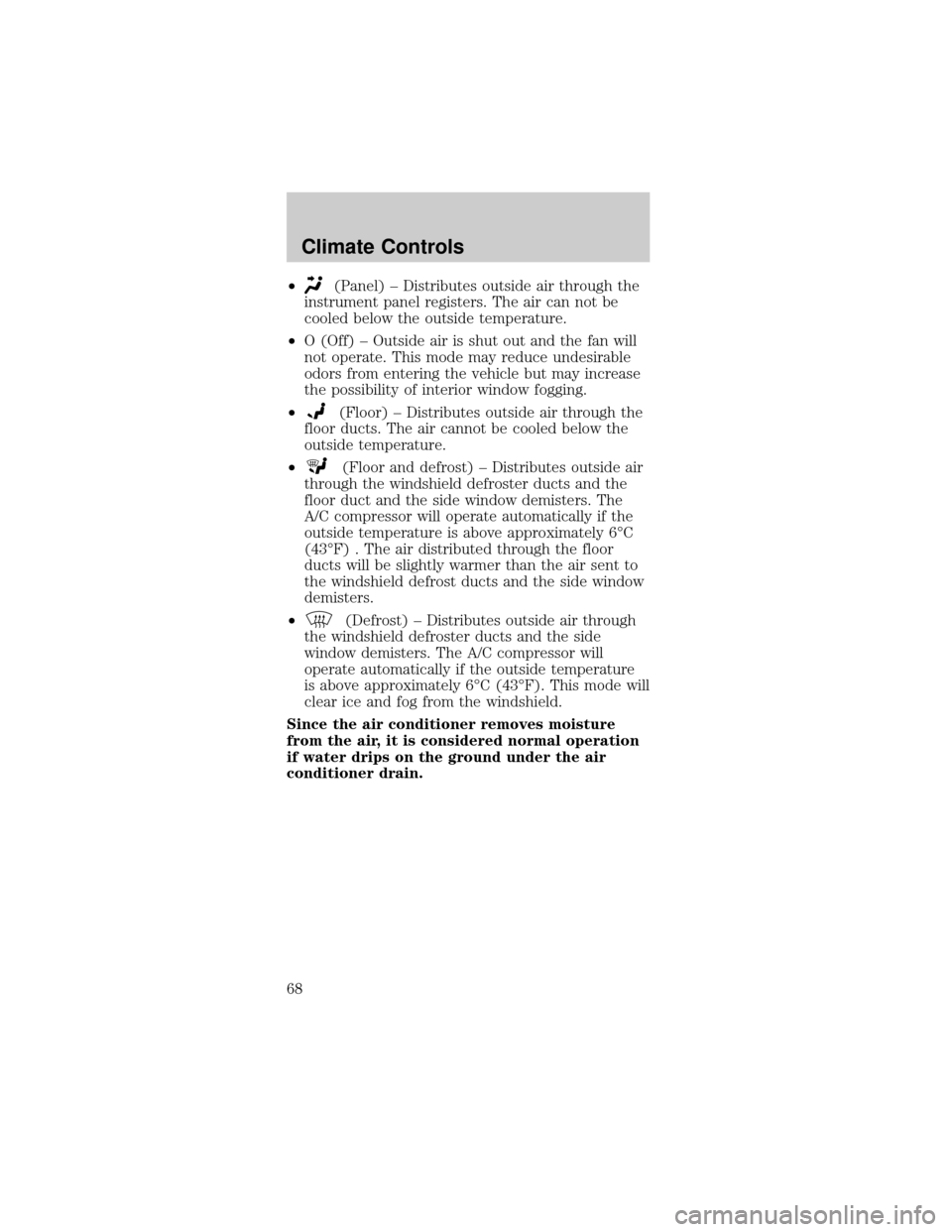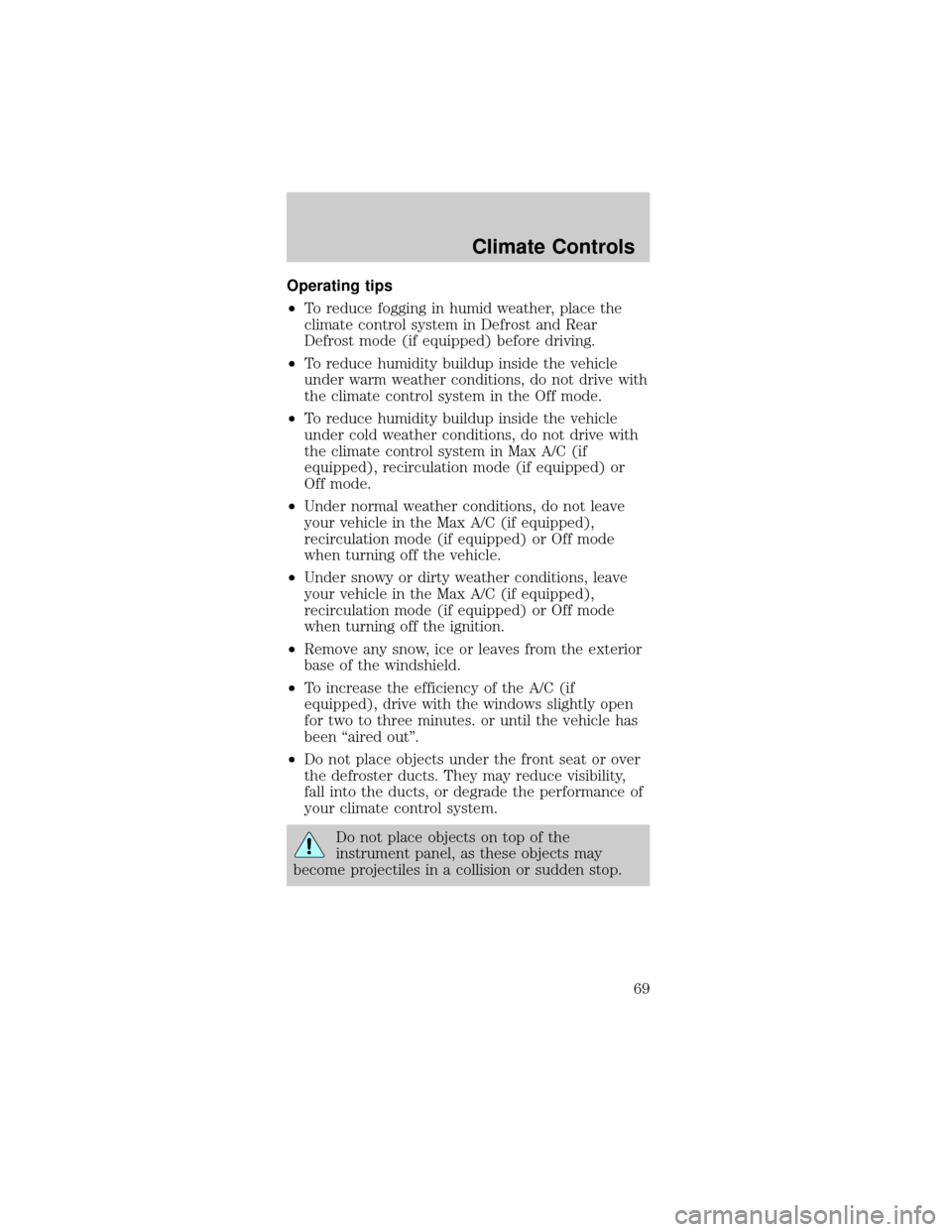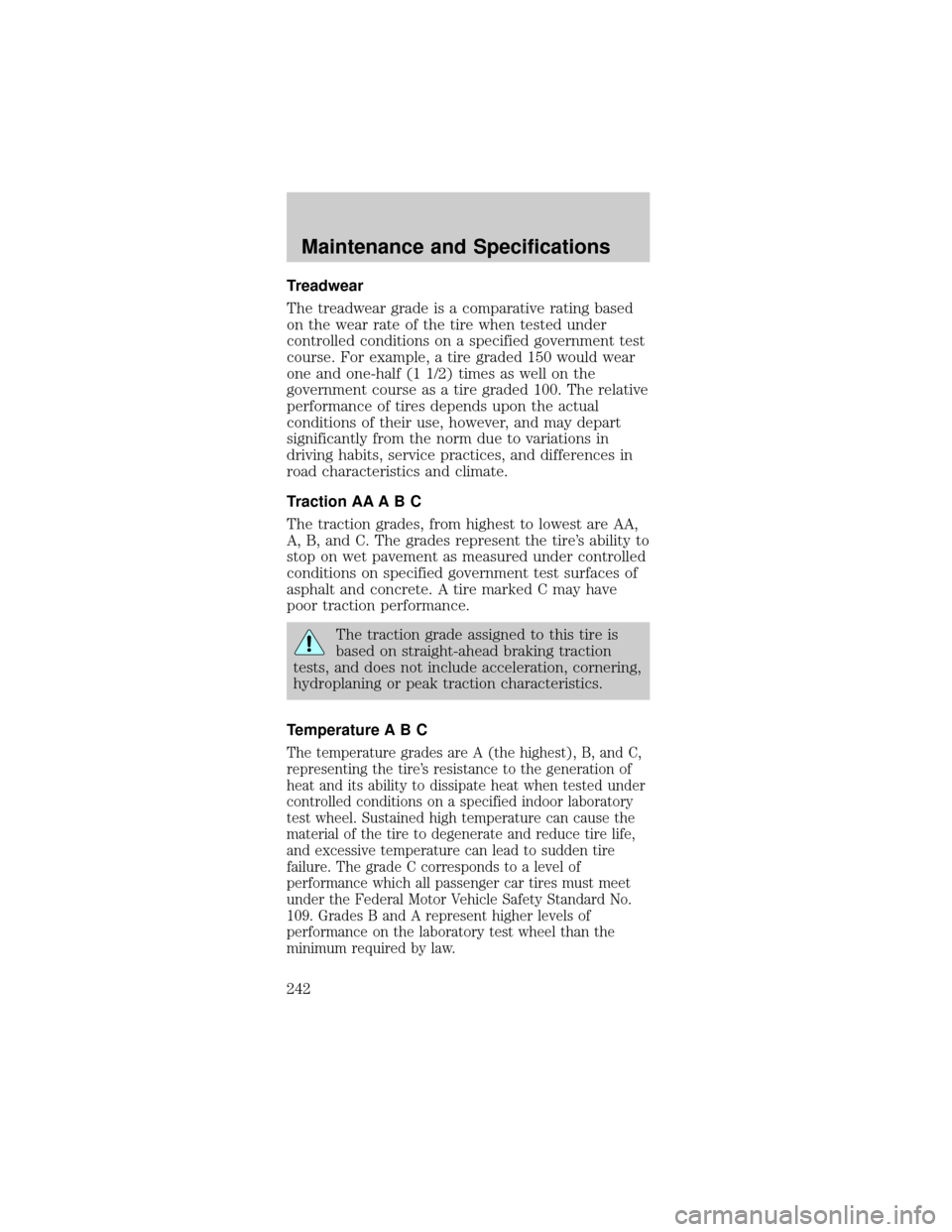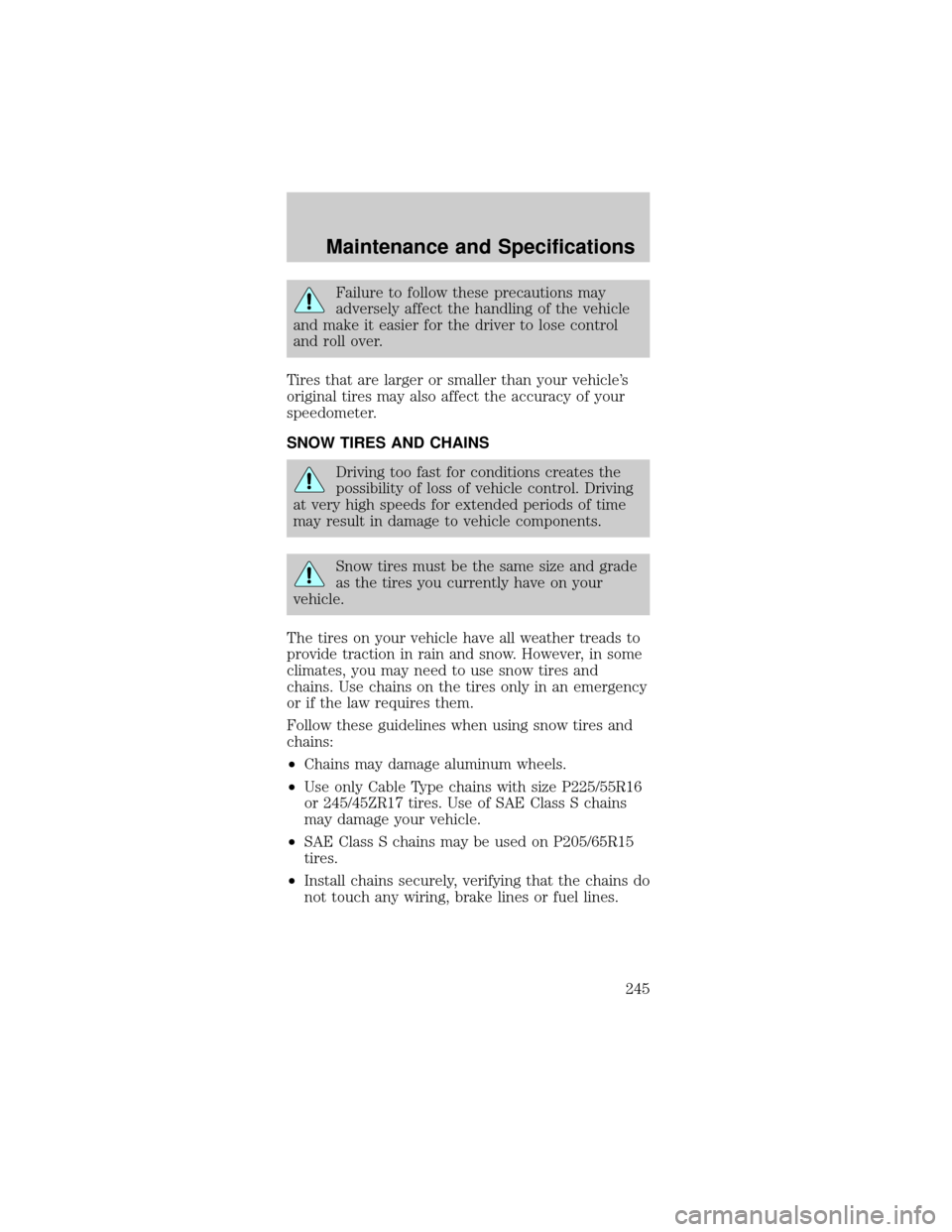Page 1 of 264
Introduction 4
Congratulations 4
Safety and environment protection 5
Symbol glossary 8
Instrument Cluster 10
Warning and control lights 10
Gauges 16
Entertainment Systems 20
AM/FM stereo cassette with CD 20
AM/FM stereo with CD 30
AM/FM stereo cassette (CD changer compatible) 45
Climate Controls 67
Manual heating and air conditioning 67
Lights 71
Headlamps 71
Bulb replacement 75
Driver Controls 81
Windshield wiper/washer control 81
Steering wheel adjustment 82
Power windows 83
Mirrors 84
Locks and Security 94
Keys 94
Locks 94
Anti-theft system 96
Table of Contents
1
Page 67 of 264
MANUAL HEATING AND AIR CONDITIONING
SYSTEM
Fan speed control
Controls the volume of
air circulated in the
vehicle.
Temperature control knob
Controls the
temperature of the
airflow inside the
vehicle.
Mode selector control
Controls the direction
of the airflow to the
inside of the vehicle.
²MAX A/C ± Distributes recirculated air through
the instrument panel registers. The A/C
compressor will only function if the outside
temperature is above approximately 6ÉC (43ÉF).
MAX A/C is noisier than A/C, but more
economical and efficient. This mode may prevent
undesirable odors from entering the vehicle.
²A/C ± Distributes outside air through the
instrument panel registers. The A/C compressor
will only function if the outside temperature is
above approximately 6ÉC (43ÉF) .
MAX
A/CA/C
MAX
A/CA/C
Climate Controls
67
Page 68 of 264

²(Panel) ± Distributes outside air through the
instrument panel registers. The air can not be
cooled below the outside temperature.
²O (Off) ± Outside air is shut out and the fan will
not operate. This mode may reduce undesirable
odors from entering the vehicle but may increase
the possibility of interior window fogging.
²
(Floor) ± Distributes outside air through the
floor ducts. The air cannot be cooled below the
outside temperature.
²
(Floor and defrost) ± Distributes outside air
through the windshield defroster ducts and the
floor duct and the side window demisters. The
A/C compressor will operate automatically if the
outside temperature is above approximately 6ÉC
(43ÉF) . The air distributed through the floor
ducts will be slightly warmer than the air sent to
the windshield defrost ducts and the side window
demisters.
²
(Defrost) ± Distributes outside air through
the windshield defroster ducts and the side
window demisters. The A/C compressor will
operate automatically if the outside temperature
is above approximately 6ÉC (43ÉF). This mode will
clear ice and fog from the windshield.
Since the air conditioner removes moisture
from the air, it is considered normal operation
if water drips on the ground under the air
conditioner drain.
Climate Controls
68
Page 69 of 264

Operating tips
²To reduce fogging in humid weather, place the
climate control system in Defrost and Rear
Defrost mode (if equipped) before driving.
²To reduce humidity buildup inside the vehicle
under warm weather conditions, do not drive with
the climate control system in the Off mode.
²To reduce humidity buildup inside the vehicle
under cold weather conditions, do not drive with
the climate control system in Max A/C (if
equipped), recirculation mode (if equipped) or
Off mode.
²Under normal weather conditions, do not leave
your vehicle in the Max A/C (if equipped),
recirculation mode (if equipped) or Off mode
when turning off the vehicle.
²Under snowy or dirty weather conditions, leave
your vehicle in the Max A/C (if equipped),
recirculation mode (if equipped) or Off mode
when turning off the ignition.
²Remove any snow, ice or leaves from the exterior
base of the windshield.
²To increase the efficiency of the A/C (if
equipped), drive with the windows slightly open
for two to three minutes. or until the vehicle has
been ªaired outº.
²Do not place objects under the front seat or over
the defroster ducts. They may reduce visibility,
fall into the ducts, or degrade the performance of
your climate control system.
Do not place objects on top of the
instrument panel, as these objects may
become projectiles in a collision or sudden stop.
Climate Controls
69
Page 70 of 264
REAR WINDOW DEFROSTER
(IF EQUIPPED)
The rear defroster
control is located on
the instrument panel.
Press the rear defroster
control to clear the
rear window of thin ice
and fog.
²A small LED will illuminate when the rear
defroster is activated.
The ignition must be in the ON position to operate
the rear window defroster.
The defroster turns off automatically after 10
minutes or when the ignition is turned to the OFF
position. To manually turn off the defroster before
10 minutes have passed, push the control again.
Climate Controls
70
Page 167 of 264
Fuse/Relay
LocationFuse Amp
RatingPassenger Compartment
Fuse Panel Description
12 Ð Not used
13 15A Electronic flasher
14 Ð Not used
15 15A Power lumbar
16 Ð Not used
17 15A Speed control servo, Shift
lock actuator
18 15A Electronic flasher
19 15A Power mirror switch, GEM,
Anti-theft relay, Power door
locks, Door ajar switches
20 15A Convertible top switch
21 5A Instrument cluster and
Engine control memory
22 Ð Not used
23 15A A/C clutch, Defogger switch
24 30A Climate control blower
motor
25 25A Luggage compartment lid
release
26 30A Wiper/Washer motor, Wiper
relays
27 20A Radio
28 15A GEM, Overdrive cancel
switch
29 15A ABS module
30 15A DRL module
31 10A Data link connector
32 15A Radio, GEM
33 15A Stop lamp switch, Speed
control deactivation switch
34 20A Instrument Ccuster, CCRM,
Data link connector,
Securilock transceiver
module
Roadside Emergencies
167
Page 242 of 264

Treadwear
The treadwear grade is a comparative rating based
on the wear rate of the tire when tested under
controlled conditions on a specified government test
course. For example, a tire graded 150 would wear
one and one-half (1 1/2) times as well on the
government course as a tire graded 100. The relative
performance of tires depends upon the actual
conditions of their use, however, and may depart
significantly from the norm due to variations in
driving habits, service practices, and differences in
road characteristics and climate.
Traction AA A B C
The traction grades, from highest to lowest are AA,
A, B, and C. The grades represent the tire's ability to
stop on wet pavement as measured under controlled
conditions on specified government test surfaces of
asphalt and concrete. A tire marked C may have
poor traction performance.
The traction grade assigned to this tire is
based on straight-ahead braking traction
tests, and does not include acceleration, cornering,
hydroplaning or peak traction characteristics.
Temperature A B C
The temperature grades are A (the highest), B, and C,
representing the tire's resistance to the generation of
heat and its ability to dissipate heat when tested under
controlled conditions on a specified indoor laboratory
test wheel. Sustained high temperature can cause the
material of the tire to degenerate and reduce tire life,
and excessive temperature can lead to sudden tire
failure. The grade C corresponds to a level of
performance which all passenger car tires must meet
under the Federal Motor Vehicle Safety Standard No.
109. Grades B and A represent higher levels of
performance on the laboratory test wheel than the
minimum required by law.
Maintenance and Specifications
242
Page 245 of 264

Failure to follow these precautions may
adversely affect the handling of the vehicle
and make it easier for the driver to lose control
and roll over.
Tires that are larger or smaller than your vehicle's
original tires may also affect the accuracy of your
speedometer.
SNOW TIRES AND CHAINS
Driving too fast for conditions creates the
possibility of loss of vehicle control. Driving
at very high speeds for extended periods of time
may result in damage to vehicle components.
Snow tires must be the same size and grade
as the tires you currently have on your
vehicle.
The tires on your vehicle have all weather treads to
provide traction in rain and snow. However, in some
climates, you may need to use snow tires and
chains. Use chains on the tires only in an emergency
or if the law requires them.
Follow these guidelines when using snow tires and
chains:
²Chains may damage aluminum wheels.
²Use only Cable Type chains with size P225/55R16
or 245/45ZR17 tires. Use of SAE Class S chains
may damage your vehicle.
²SAE Class S chains may be used on P205/65R15
tires.
²Install chains securely, verifying that the chains do
not touch any wiring, brake lines or fuel lines.
Maintenance and Specifications
245